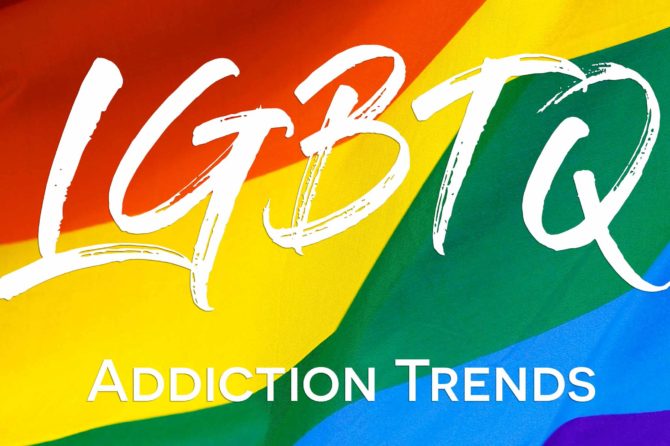
LGBTQ Addiction Trends
According to the Substance Abuse and Mental Health Services Administration (SAMHSA), about two-thirds (66.6%) of people aged 12 or older reported in 2014 that they drank alcohol in the past 12 months, with 6.4% meeting criteria for an alcohol use disorder. Unfortunately for those in the LGBTQ community, pressures can be nominally higher. According to the National Institute on Drug Abuse, “People who identify as lesbian, gay, bisexual, or transgender (LGBT) often face social stigma, discrimination, and other challenges not encountered by people who identify as heterosexual. They also face a greater risk of harassment and violence. As a result of these and other stressors, sexual minorities are at increased risk for various behavioral health issues.”
Because most federally-funded surveys have only recently begun asking about both sexual orientation and gender identification in their questionnaires, the data has been shortcoming. However, recently completed surveys that do ask those questions have found that, indeed, there are higher rates of addiction in the LGBTQ community.
In fact, according to the National Institute on Drug Abuse, the LGBTQ community was “more than twice as likely as heterosexual adults (39.1 percent versus 17.1 percent) to have used any illicit drug in the past year.” Almost a third of LGBTQ adults – 30.7% – used marijuana in the past year, compared to 12.9% of heterosexual adults, and “about 1 in 10 (10.4 percent) misused prescription pain relievers, compared to 4.5 percent of heterosexual adults.”
So how are people in the LGBTQ more susceptible? One means is known as chemsex, AKA “pnp” or “party and play”, which is the process of taking drugs to enhance sex. According to New Scientist, “Typically it involves crystal methamphetamine, GHB (gamma hydroxybutyrate) or mephedrone, also known as miaow miaow, which can be snorted or swallowed. There’s also “slamsex”, which is when the drugs are injected for a more intense high.”
What’s disturbing about this trend – that is more popular in the LGBTQ community – is that it elevates the risks of sexually transmitted diseases such as HIV and Hep C. Common wisdom posits that the highs with chemsex can make people feel fewer inhibitions and thus have unprotected sex. Plus, the numbers of people performing chemsex are alarming. A survey of gay men in London, England showed one-fifth of the thousand men who participated in the survey had had chemsex within the past five years and one-tenth had done it as recently as the past month.
So what can someone in the LGBTQ community do to get help? According to Windward Way, “there is not a “one size fits all” treatment that will guarantee successful, long-term sobriety.”
Again, according to the National Institute on Drug Abuse, those in the LGBTQ community do indeed have a “greater likelihood than non-LGBT persons of experiencing a substance use disorder in their lifetime, and they often enter treatment with more severe substance use disorders.”
But that doesn’t mean help can’t be found; in fact, far from it. As Windward Way adds, “what we know is that there are a few modalities that consistently work to help people recover from substance abuse disorder.” Those modalities include Equine therapy, holistic therapy, BioSound therapy, EMDR therapy, trauma therapy in an individual counseling setting, chemical dependency therapy, psychotherapy, and sound therapy.
In fact, there are a number of ways. Windward Way suggests three:
Love Yourself
It’s truly tough to do this but it allows us to celebrate sobriety whilst at the same time rebuilding self-esteem. So look at yourself in the mirror and tell yourself how amazing you are!
Be Smart
Addiction comes in many forms – and when you’re an addict, it’s something you have to overcome every day of your life. By staying vigilant and calling ourselves out on unsafe behaviors, we can maintain our recovery.
Dating
When we show up to a date sober or make a point to meet at a place that doesn’t serve alcohol, we get to be our real selves. And we see our date at their most real, too.
Again, according to the National Institute on Drug Abuse, some common substance abuse treatment modalities have been shown to be effective for gay or bisexual men including motivational interviewing, social support therapy, contingency management, and cognitive-behavioral therapy.
The bottom line is that those in the LGBTQ are more susceptible to addiction. That’s why it is especially important for those who are to also be screened for other psychiatric issues, all of which should be treated at the same time.
Leave a reply